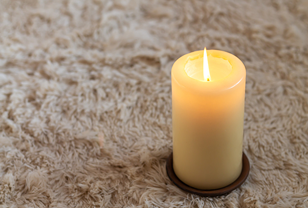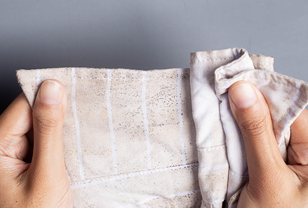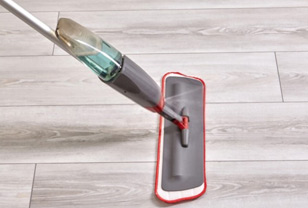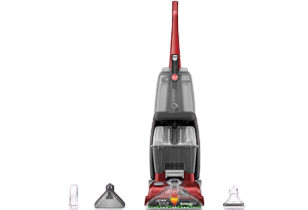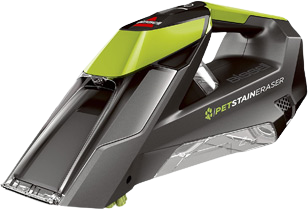How to Use Vacuum Cleaner - Tips and Techniques to Vacuum Your Floor Properly
That said, it wouldn’t be a surprise if you think that the question of how to use vacuum cleaner should be for the beginners only. However, if we know how to use this home appliance properly, we can save time vacuuming the floor while maintaining its lifespan. So read on then! I'll share with you a few useful tips and techniques on how to make the most of this tool.
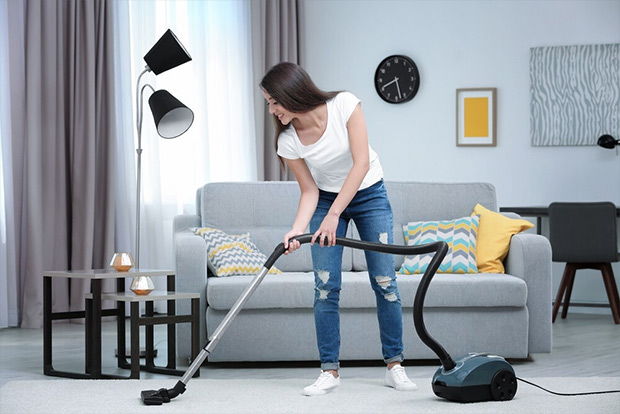
Knowing how to use a vacuum cleaner properly is necessary
I. Tips and techniques on how to use a vacuum
1. Pick up toys from the floor
Parents of toddlers of pet owners all know too well that their little kids and four-legged friends can be very messy. They leave all sorts of squishy toys on the floor, behind the table chair, or right in your hallway. Clutter might slow your cleaning process down. So before vacuuming, look for the objects that are too big to be vacuumed up. In doing so, you can avoid breaking your vacuum cleaner.
2. Take you time and vacuum slowly
I have to admit that I tend to rush things up when there are many chores to do. I used to move the vacuum across the floor as fast as I could. While this might look like I save time and keep things moving quickly, it's not. After using my vacuum a few times, I realized that it takes time for the vacuum to pick up everything on the carpet fiber, especially the ground-in dirt and debris.
Therefore, If I were asked for one tip on using a vacuum cleaner, I would recommend all homeowners pass their vacuum to and fro slowly. It's best to take your time and avoid rushing.
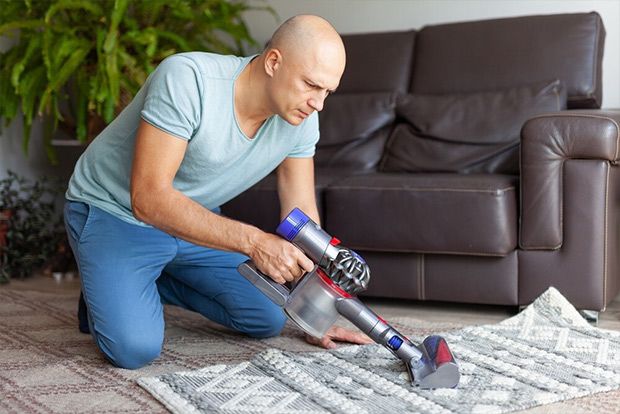
Vacuuming slowly and carefully is the key to a clean floor
3. Empty the vacuum’s bag and clean the filter when it’s full
Your vacuum won't work effectively when its bag and filter are full. So empty the bag and clean the filter regularly to maintain its powerful suction strength. One common tip is not to let the bag get more than three-quarters full to ensure optimal performance.
As for the filter, it would depend on your filter capacity. For example, canisters and uprights usually have filters with a larger volume than sticks or robots. Given this, if you're using a full-sized upright or canister vacuum, and not living in a large house, you can clean the filter after several uses. But if you're using a stick, handheld, or a robot, cleaning the filter after each use is highly recommended.
How To Clean A Vacuum Filter? Depending on the type of filter of your vacuum, you can follow these simple steps to keep it clean.
3.1. Tips to clean foam filters
Canister vacuums or other bagless machines usually accompany a foam filter that sits right under the canister. It's easy to be seen when you remove the canister, and cleaning this foam filter is pretty straightforward if you follow these steps:
- Submerge it in the water for about 1 to 2 minutes.
- Squeeze it to let the dirt and dust escape the foam.
- Leave it aside to dry completely.
- Install it back in.
- Add several drops of fragrance oils to the foam filter (if you want your space to smell nice the next time you vacuum).
➜ RELATED: How To Clean A Dyson Filter - An Easy Step-By-Step Guide
3.2. Tips to clean cartridge filters
Regular cleaning of pleated filters can ensure that they will last longer. In addition, once the dust is removed from a cartridge filter, airflow will be significantly improved, ensuring better performance. Now, follow these steps to keep it clean:
- Remove the cartridge from your vacuum.
- Tap the cartridge against the trash can to loosen debris trapped in between the pleats.
- Use a piece of microfiber cloth to clean the pleats.
- Shake the filter to dislodge all stubborn debris into the garbage.
- Put the filter back in.
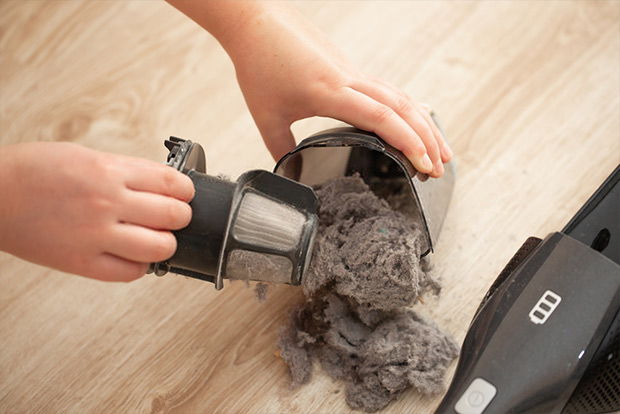
Wash/clean the filters regularly to ensure your vacuum's optimal performance
3.3. Tips to clean HEPA filters
Most vacuum manufacturers recommend their users clean the HEPA filter every month. However, how frequently it needs to be cleaned will largely depend on how often you vacuum and whether you have pets. If your dwelling is large and you have a few pets, I would say clean it after about three uses by following these simple steps:
- Remove the HEPA filter from the air purifier.
- Wipe down the filter's surface with a damp cloth. Again, depending on how dirty your HEPA filter is, you might want to rinse the cloth out and repeat this process until it's clean.
- Allow the filter to air dry in a safe area.
- Once it’s fully dry, put it back in.
Your HEPA filter should be replaced every six months to ensure its proper functions.
4. Make the most of your vacuum’s attachments
The best rated vacuum cleaner usually comes with a full set of accessories, making it convenient to use on multiple floor types and off-floor surfaces. So when I first started pulling together a comprehensive guide on how to use vacuum cleaner, I thought it would be helpful for my readers to include a few tips on how to make full use of these tools.
Most vacuums come with several standard attachments like an extension wand, an upholstery tool, a crevice cleaner, and a dusting brush. These tools help us vacuum our floors more thoroughly. Others might include more premium and purpose-specific accessories. I'll start with tips on how to use the basic ones first.
- The extension wand is a sturdy plastic tube that adds length to your hose, allowing you to reach high objects like ceiling fans, shelves, lamps, door frames. That said, you don't need to climb the ladder anymore. Better yet, this tool can let you keep your arms close to your body, so gone are the days of straining or fatigue after intensive home cleaning sessions.
- The upholstery tool is a four-inch-wide plastic piece of attachment that provides a suction band on upholstery surfaces. It comes with microfibre strips at the edge to help draw out dust and pet hair. I always use this upholstery tool to vacuum my carpeted stairs, and it works wonders. Sometimes it also helps me to vacuum my mattresses.
- The crevice tool is an angled-tip accessory that is around 8 to 12-inch long. It helps to grab debris from tight spots like in between sofa, baseboard edges, cobwebs from corners, dirt from the doorjamb, or crumbs from car seats, just to name a few.
- A dusting brush is an inch-long tool with surrounding soft bristles at its opening. It provides gentle yet effective abrasion to remove dust particles from baseboards, lampshades, and other delicate surfaces or decorative pieces without leaving any scratches.
How to use a vacuum if not knowing how to operate its most basic tools? So if you've reached this part of the article, you've probably learned how to use the above standard tools. However, in some hi-end vacuum cleaners, you can also find attachments like a floor sweeper, a powder brush, a multi-angle brush, and I'll share with you tips on how to use them below.
The floor sweeper is a 10 to 12-inch floor brush for hardwood surfaces. In almost all cases, it comes with soft and half-inch bristles that can help homeowners pick up dirt much faster than a broom can. Besides, this little tool is also a life-saver in picking up dirt and debris on low-pile rugs or carpets.
The power brush is a mini motorized tool designed especially for carpeted stairs. It has a rotating brush roll that can pick up dust on carpeted stairs quickly. Better yet, it also works well in small closets or other tight spaces.
A multi-angle brush is a curved attachment with soft bristles and pivoting head. It can maneuver into the most hidden nooks and crannies of blinds, vehicle interiors, closet tracks, or light fixtures to pick up dust.
5. Vacuum regularly
Aside from knowing how to use vacuum cleaner, homeowners might also need to know how often they should vacuum. Home experts usually recommend that we should vacuum our floor every week. However, this is just a general recommendation, and how often you vacuum will depend on many factors. So if you have pets, daily vacuuming is highly recommended to keep pet hair and dander at bay.
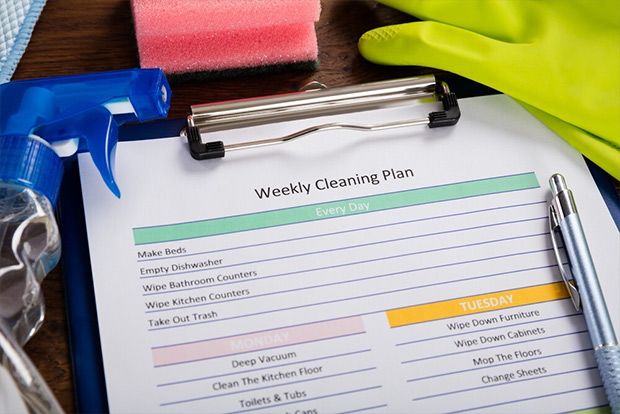
Vacuuming regularly to ensure your house is always clean
Also, if you're living in dusty areas or near the beach, dust, dander, or other allergens can quickly find their way into the cracks of your floors. Vacuuming every two or three days would keep your house cleaner and more hygienic. The same rule applies to those with allergies or respiratory-related diseases like asthma or COPD. The more often you vacuum, the fresher the air of your house would be. You'll never know how many small microscopic allergens are accumulated in the house and can find their way into your lungs.
Keeping a periodical vacuuming schedule would also ensure that your vacuum cleaner won't have to work so hard to pick up accumulated dirt and debris on your floor. So it's all about the longevity of your vacuum here. The harder it has to work, the easier it gets to break down.
6. Keep your vacuum smelling fresh
Your carpets and rugs are not only subjected to dirt but also to grime. So, unsurprisingly, it starts to smell bad after vacuuming your floor, as clogged vacuums usually cause these irritating odors. So now, how to make vacuum smell better? Below are a few simple and actionable tips:
- Tip #1: Wash the exterior bag and replace the interior bag
Pet dander, hair, dust, and dirt can leave irritating odors on vacuums' bags. Therefore, it's best to take good care of these bags when your vacuum smells. Some exterior bags are washable, but others are not. Before attempting to wash these bags, check the manufacturers' instructions carefully. If yours is not rinsable, then use a damp cloth to wipe it down instead.
- Tip #2: Wash out the dirt canister
If your vacuum is bagless, the plastic dirt canister needs to be cleaned regularly with soap and warm water. A foul odor can come from accumulated dirt and grime stuck on the sides of the canister. I would say it's best to clean the canister every few weeks to avoid debris from caking up inside your canister.
- Tip #3: Use fragrant herbs or essential oils
If your carpet is in dark colors, you can sprinkle fragrant oils directly on the floor and then vacuum. If your carpet is in bright colors, then sprinkle these fragrant herbs inside the vacuum bags to infuse them with a nice fragrance.
I often sprinkle lavender or bergamot onto a cotton wool ball and put it in the canister's bag. I was told that orange peel works the same, but I haven't tried to use it. So if you've tried it out before, I would love to hear your feedback in the below comments section.

Essential oils work wonder in removing vacuums' bad odours
- Tip #4: Use baking soda
Baking soda is alkaline, thus, highly effective in removing odor compounds, and I guess many of us have used it to eliminate odors in our fridges, so it works the same way for vacuums. You can add a tablespoon of baking soda to your vacuum bag before vacuuming. If you're using a bagless vacuum, then sprinkle several tablespoons of baking soda on the floor.
- Tip #5: Use fabric softener
A fabric softener is another useful solution to get rid of odors on your vacuum cleaner. Simply place one sheet of fabric softener inside your vacuum bag. Once the vacuum is turned on, this sheet will be activated, releasing a nice fragrance. If you're using a bagless vacuum, place it inside the plastic compartment instead.
- Tip #6: Use dishwasher soap
Germs and odors can build up on the exterior of your vacuum. So you can wipe it down thoroughly using a dishwasher and warm water. After that, use a disinfectant spray to get rid of any lingering odors.
Knowing how to use a vacuum cleaner is necessary, but getting to know tips on limiting its odors is no less important. Vacuum cleaners are supposed to keep our home smell clean and fresh, but if this cleaning tool smells bad itself, it will release an awful odor as you vacuum. Fortunately, you can always prevent the machine from smelling bad by ensuring that its inside components are clean with minimal effort and time.
Now you’ve learned how to operate vacuum cleaner and take good care of this cleaning tool. Read on as I provide quick answers to some of the most commonly asked questions about vacuum cleaners usage.
The bottom line
I hope you've got some useful tips and techniques on how to use vacuum cleaner. Aside from picking the right type of vacuum for your floor, proper use and regular maintenance also play an important role in keeping your vacuum's consistent suction power and performance. Taking the full advantages of the included accessories can also minimise your time and energy spent on floor vacuuming tasks. If you have any questions, feel free to leave them below and I'll be in touch shortly.
FREQUENTLY ASKED QUESTIONS
- 01. What is the correct way to vacuum?
-
The correct way to vacuum is by pushing the vacuum back and forth slowly. You also need to go east to west to ensure the vacuum reaches both sides of the carpet fiber. Besides, high-traffic areas also need more attention as they're subject to more dust and dirt.
Choosing the right type of machine for your floor type is also important. Vacuums with brush roll on-off buttons are the most convenient to use as they allow users to shut the brush roll off for hardwood floors and turn it on for carpeted areas.
- 02. Why do we use vacuum cleaner?
-
Vacuum cleaners are powerful home cleaning tools. They can help homeowners remove dust and debris from many kinds of surfaces. They keep our houses clean by sucking and removing small particles, from dust to pet hair and dander. Powered by electricity, many vacuums are also portable enough for off-floor surfaces cleaning. So vacuuming carpeted stairs, car interiors, and many hidden, hard-to-reach spots like in between sofa or ceilings is easy as a breeze.
- 03. How can I make my vacuum cleaner last longer?
-
Proper use and regular maintenance will extend the lifespan of your vacuum, regardless of which type of machine you're using. So it's best to clean the filter after several uses and clean the bag periodically. Never wait until your bag is full, or you'll lose the suction power of your vacuum.
- 04. How many types of vacuum cleaners are there?
-
Knowing how to use vacuum cleaner should probably include getting to know different types of vacuums available on the market. There’re many types of vacuums out there, but I’ll just list down here several basic ones for your reference. Uprights and canisters are two traditional vacuums that have been used for a long time. Handhelds have been popular too, but they’re less common due to their limited suction power.
Stick upright vacuums are gaining traction these days thanks to their powerful yet lightweight design. More importantly, their slim body also saves significant storage space.
In the last few years, robots are being used in many households as they set us free from the tedious and tiring tasks of vacuuming our floors. These little machines are smart, intuitive, and easy to use - so they're believed to replace the older types of vacuums in the years to come.
- 05. What should you not vacuum?
-
Vacuum cleaners are designed to keep our floors clean, but the tool shouldn't be used to pick up everything on the floor, no matter how versatile they are. That said, there are certain things that you should avoid vacuuming. Otherwise, your machine can get damaged.
For example, big pieces of broken glasses can get lodged in the hose and scratch up the interior. Also, a vacuum cleaner is not designed to pick up wet food or other moist stuff like soggy cereal or a spill. So unless you’re using a wet/dry vacuum cleaner, you should not vacuum wet debris.


